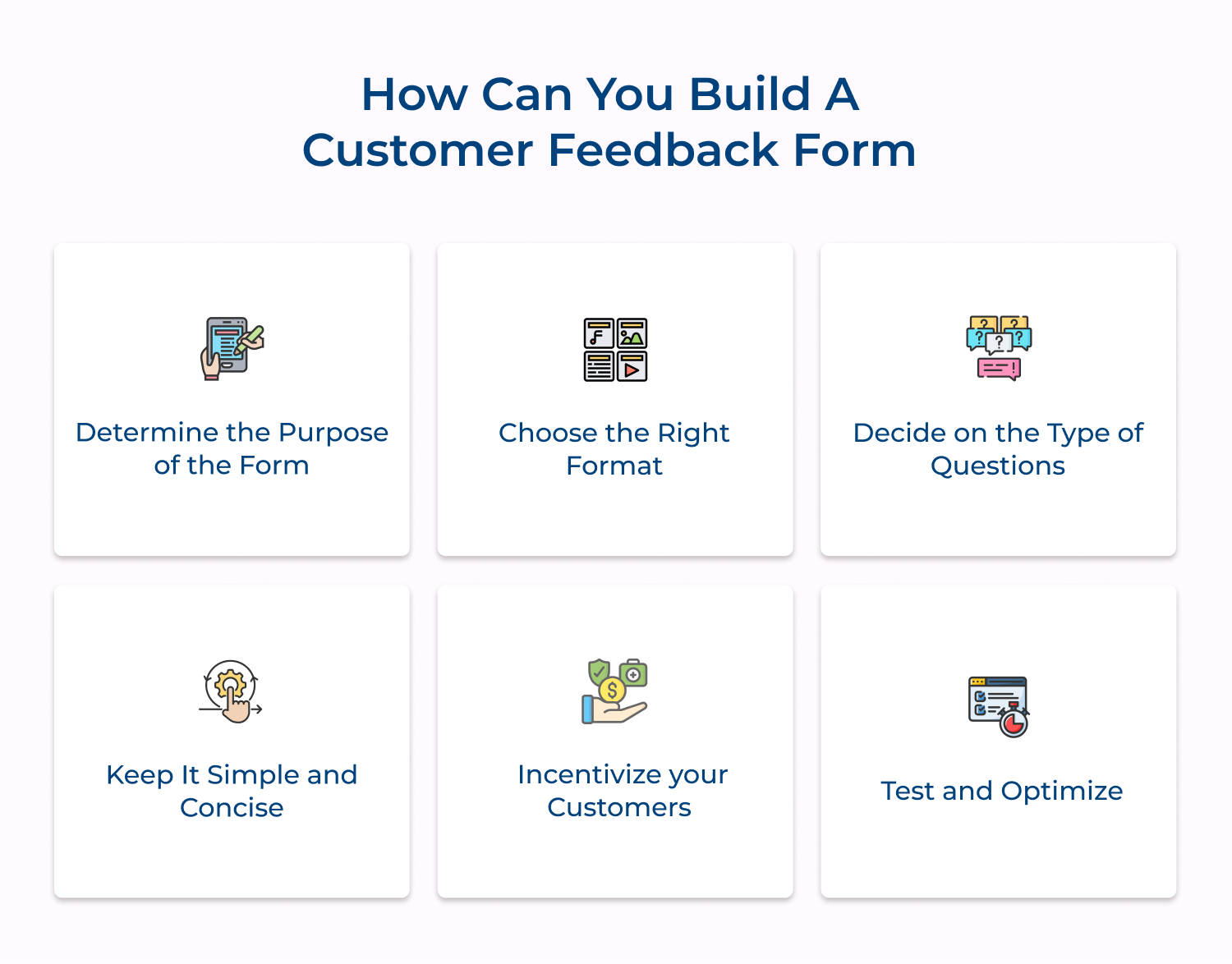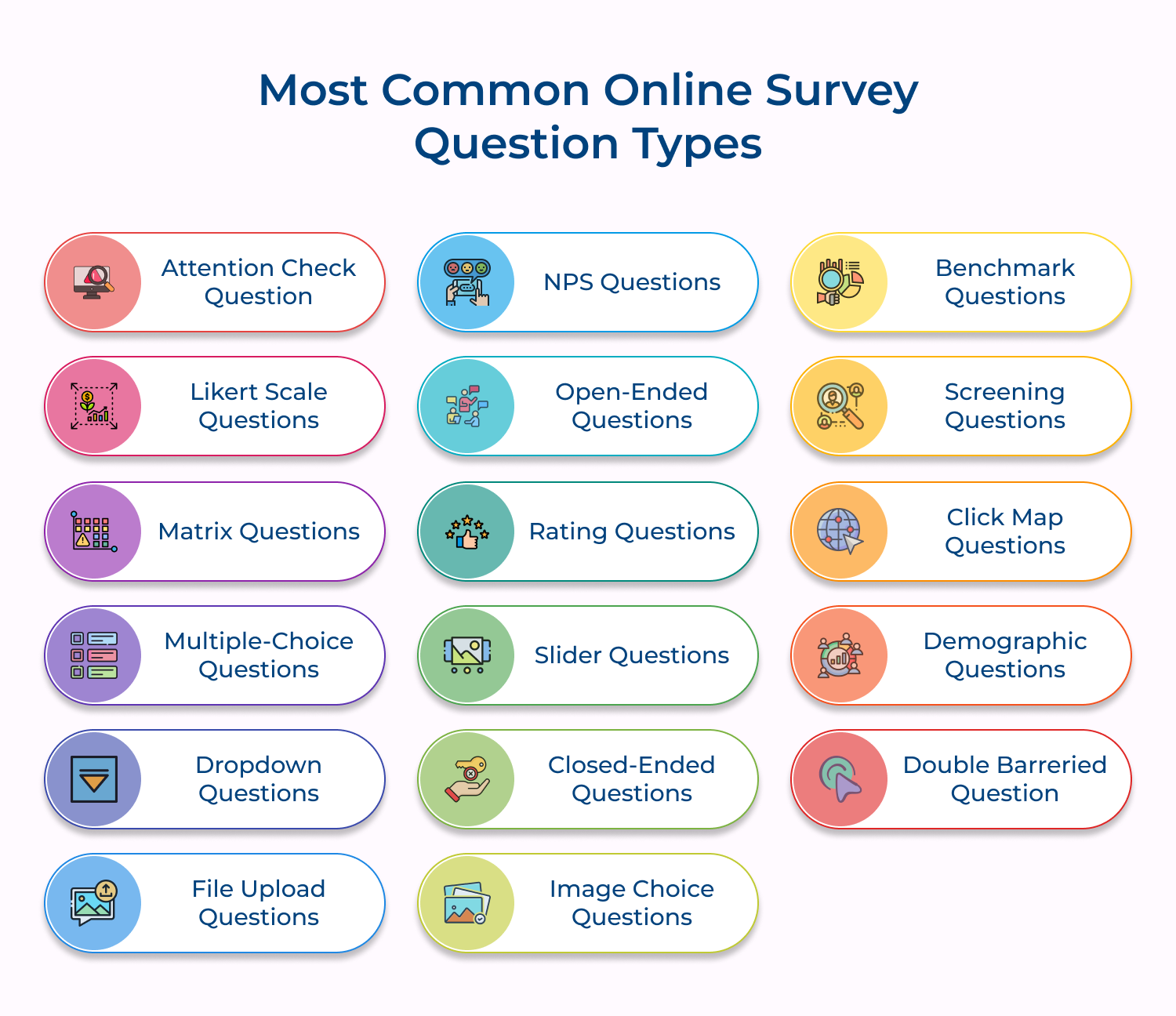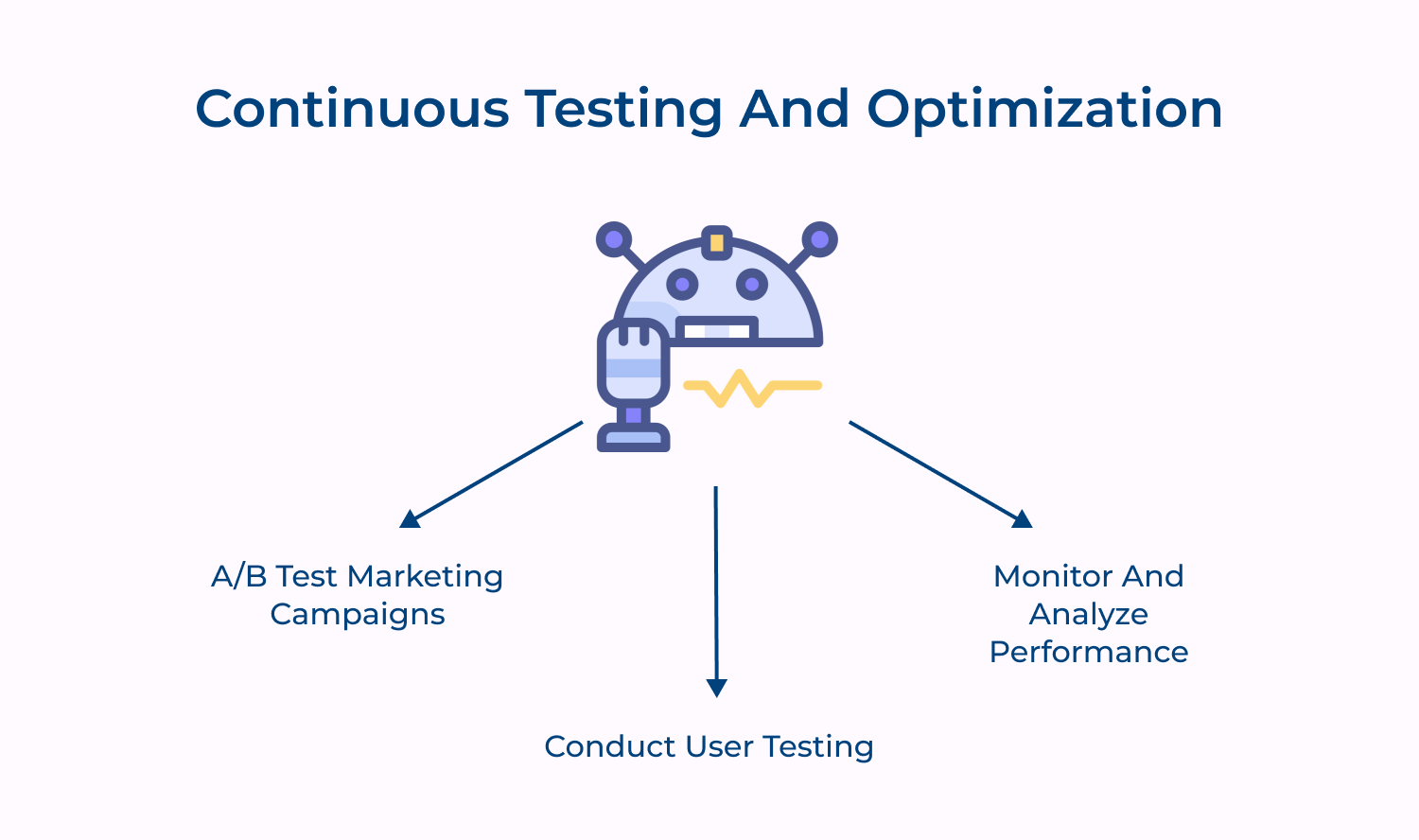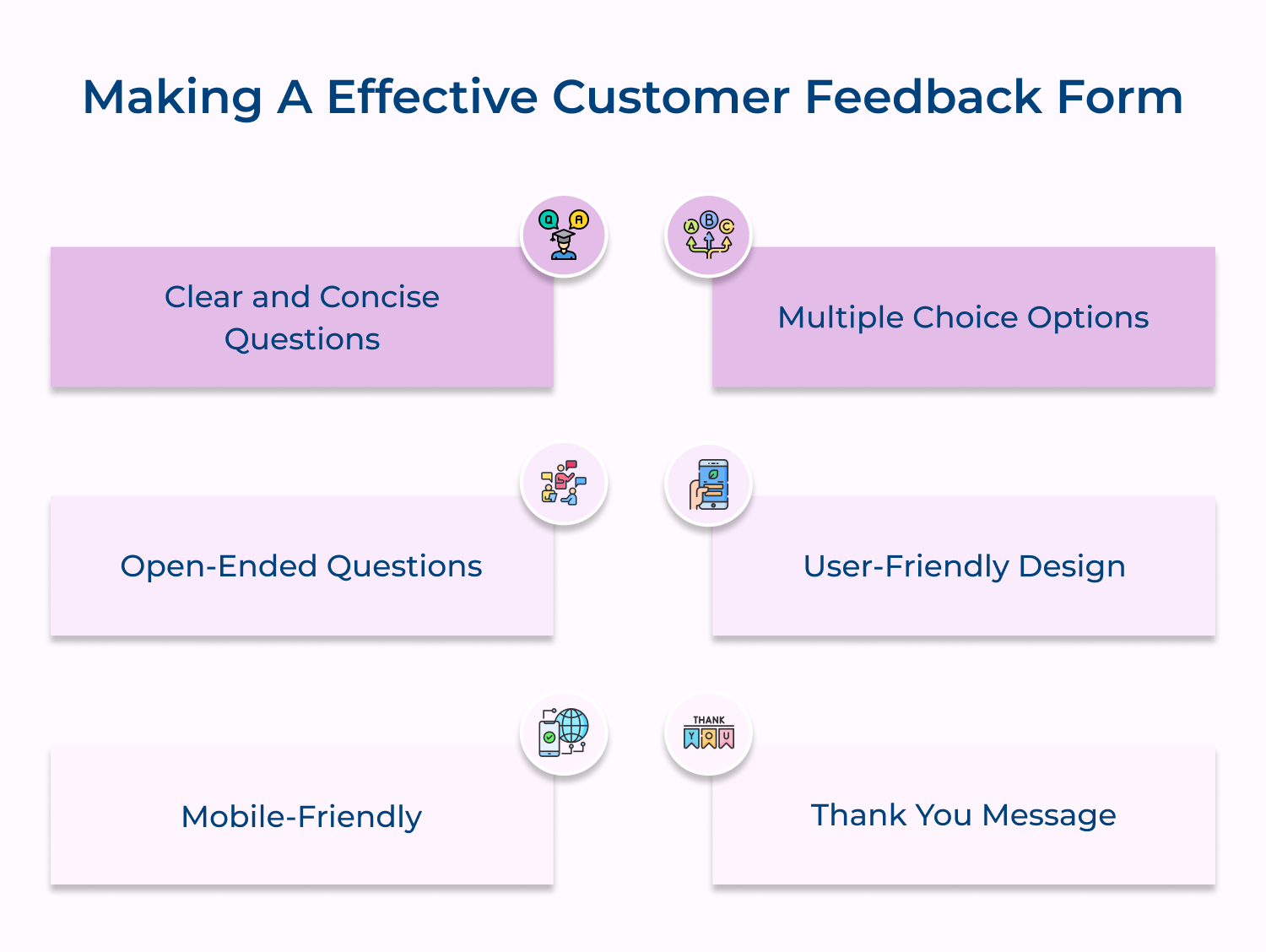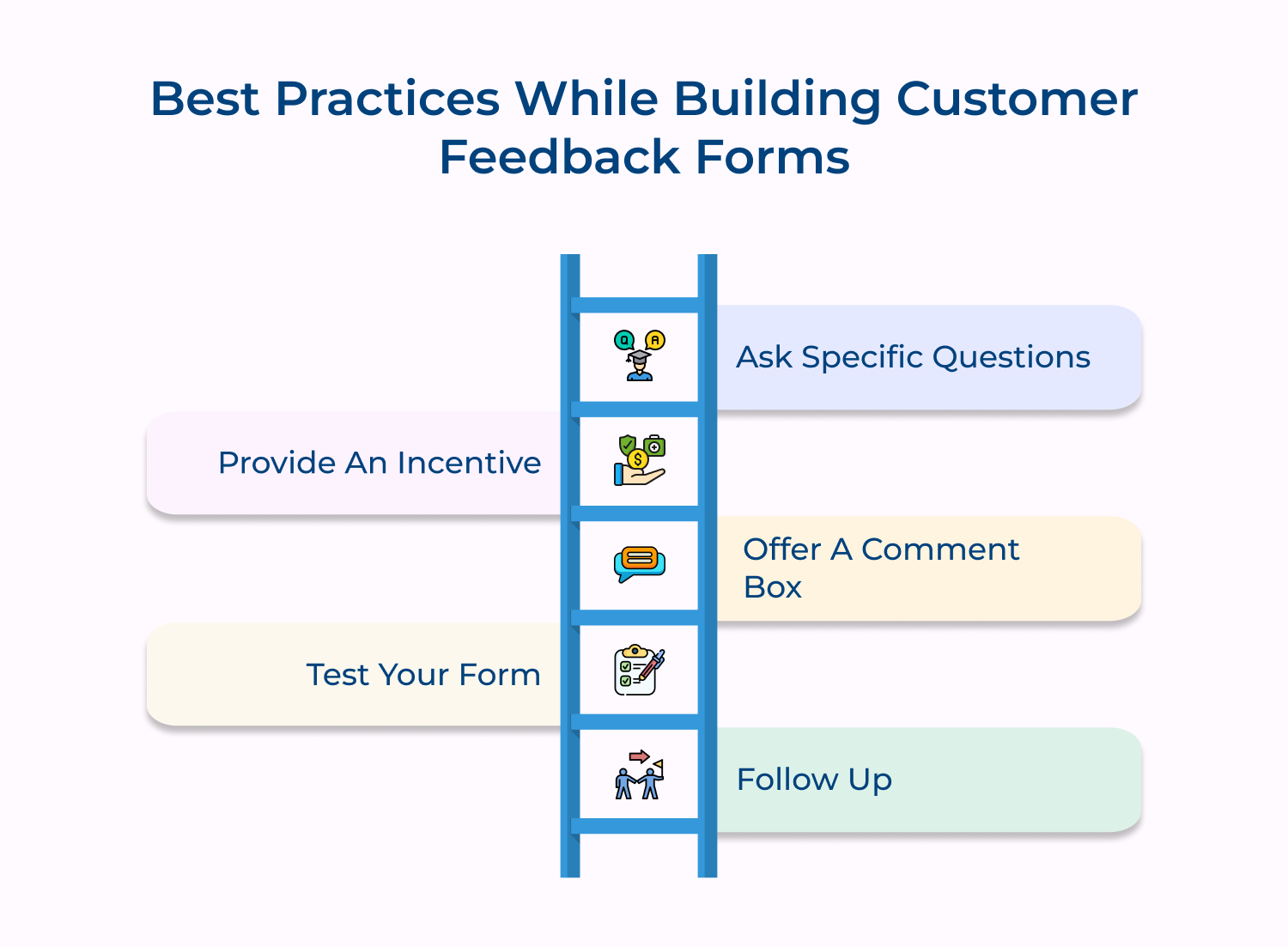Here are the best practices to keep in mind when creating customer feedback forms:
Avoid vague questions and instead ask specific questions that will give you actionable insights. For example, instead of asking “How was your experience?”, ask “What specifically did you like or dislike about our product/service?”.
Encourage customers to fill out your feedback form by offering a small incentive, such as a discount or entry into a giveaway. It can increase the response rate and provide you with more valuable feedback.
Provide customers with a comment box where they can provide additional feedback or elaborate on their responses. It can give you more context and valuable insights into their opinions.
Before launching your feedback form, test it thoroughly to ensure that it functions correctly on all devices and browsers. It will help prevent any technical issues that might prevent customers from submitting their feedback.
Once you have received feedback from customers, ensure to follow up with them to let them know that their feedback is valued and to communicate any changes or improvements that have been made as a result of their input.
Examples of Customer Feedback Forms
Customer feedback forms are an essential tool for businesses to collect valuable information from their customers. By understanding what customers like or dislike about a product or service, businesses can make necessary improvements to better meet their customer’s needs.
1. Uber Ride Rating
At the end of every Uber ride, passengers and drivers are asked to rate each other on a scale of 1 to 5 stars. Passengers can also provide comments about their ride experience, which Uber uses for quality control and driver training.
2. TripAdvisor Hotel Reviews
Travelers can leave detailed reviews about hotels they’ve stayed at, including ratings for various categories like location and service. These reviews help potential guests make informed decisions and allow hotels to address any issues or concerns.
3. Airbnb Host and Guest Reviews
After an Airbnb stay, both hosts & guests can leave public reviews and ratings for each other, covering aspects like communication or accuracy of listing details. These reviews help build trust and accountability within the Airbnb community.
4. Best Buy Customer Satisfaction Survey
After purchasing at Best Buy, customers may receive an email or SMS survey asking about their in-store or online experience, including staff helpfulness, product selection and checkout process. The feedback helps Best Buy improve its customer service and overall shopping experience.
Leverage Customer Feedback Forms for Long-term Success
Building a feedback-driven culture is essential for long-term success in any organization. By actively seeking feedback, teams can continuously improve, innovate, and adapt to changing market conditions. Encouraging open communication and a growth mindset within the organization will encourage a learning & development culture.
Embracing feedback as a tool for improvement rather than criticism will ultimately lead to increased productivity, employee satisfaction, and overall success. So, remember to prioritize feedback and incorporate it into your daily operations to ensure sustained growth.


